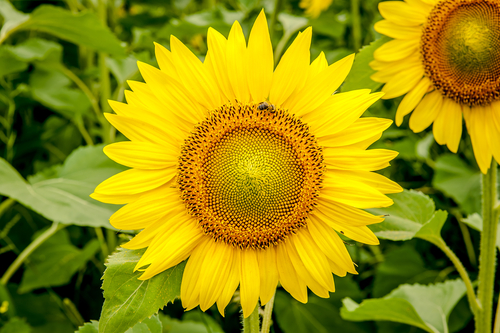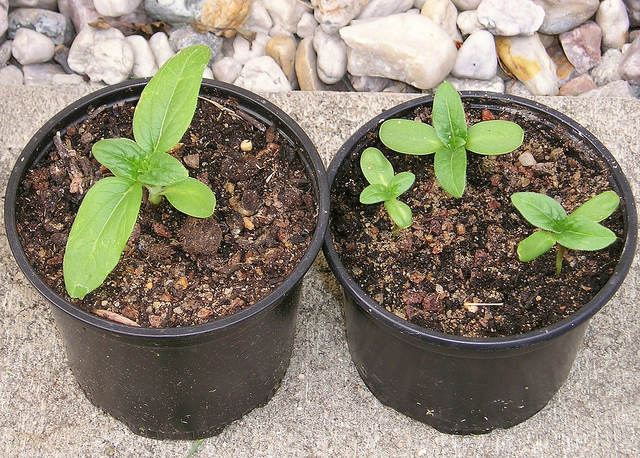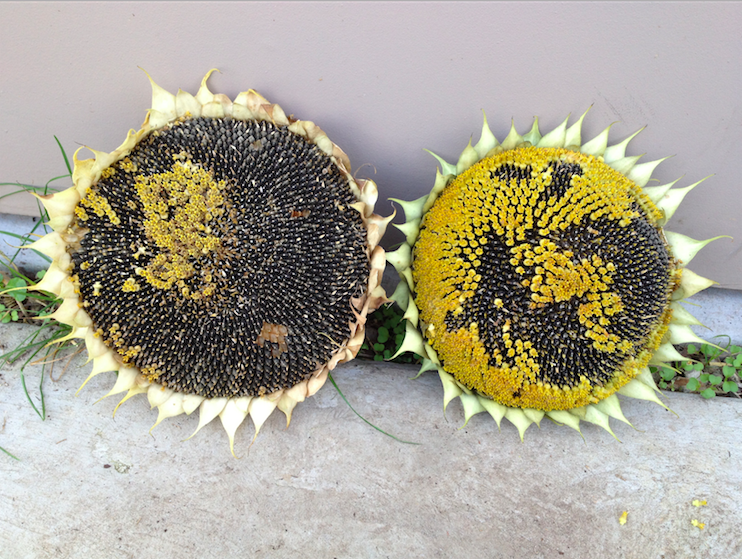Can you cut 1 Tonne of carbon pollution out of your life?
Take the challengeGrowing your own sunflowers is bound to bring a smile to your face. You will find it such a joy to mindfully watch their buds slowly open up into vibrant blooms. Beneficial insects, particularly bees will thank you for growing these beautiful flowers and in return they will help out with pollinating your crops and keeping your pests at bay.
Children will enjoy nurturing their own plants and seeing how tall or large their flowers grow. The Guiness World Record for the tallest sunflower currently stands at a mighty 9.17 metres!
You can also harvest the seeds of your sunflowers for eating, or use the edible petals in a salad, as a natural dye, or in potpourri, soaps and paper marking. Unopened flower buds can also be steamed and are said to taste similar to artichokes.

Evening Sun sunflower image: Doug McAbee (Flickr)

Sunfola sunflower image: Shutterstock
Some varieties include:
Mammoth: Growing around 3 metres tall with flowers 40cm in diameter.
Russian Giant: Grows approximately 2 metres in height.
Sunfola: A variety often used as a cut flower.
Van Gogh: A single stemmed flower growing 1.5 metres tall with particularly beautifully structured flowers.
Prado Red: A burgundy coloured sunflower.
Evening Sun: A variety with burgundy, yellow and orange colouring growing 1.5 metres tall with flowers measuring 15 centimetres in diameter.
Teddy Bear: A dwarf variety growing only 50 centimetres in height with fluffy double flowers.

image: Maja Dumat (Flickr)
Sow seeds directly into the soil or into seedling trays
If you plant seed directly into the soil make sure you provide a barrier to prevent birds or other animals eating the seeds before they sprout. Some wire or netting is ideal. If you only have a small number of seeds or your garden bed isn't ready yet, you can sow your seeds into pots.
Plant seeds around 1cm deep and 20-50cm apart, depending upon the variety. Your plants will bloom in approximately 12 weeks. You can also grow some extra sunflowers as micro-greens.
Plant in a sunny position
Find a sunny location for your sunflowers with 6-8 hours of direct sunlight and protect them from strong winds. Growing them near a wall can work well.
Water in the morning
By watering in the morning your plants leaves will have a chance to dry before sunset and this will reduce the risk of fungal moulds.
Fertilise plants regularly
For the best blooms, fertilise every 2-3 weeks with an organic fertiliser. And apply seaweed tonic every 2 weeks.
Stake giant sunflowers early on
Larger sunflowers will need some support as they grow and it is important to do this early so you don't disturb the roots. You can re-use some old pantyhose to tie your plants.
Protect from slugs, snails, and birds
Plants are most vulnerable to slugs and snails as seedlings and you can protect them using a cover with copper tape, coffee spray (1 part coffee: 3 parts water) or beer traps. When plants are seeding you can cover the heads with pantyhose, or hessian.

Save your seed for the next season
Once you have grown your first crop you can save your own seed to use for the next season. Wait until the seeds are mature and cut the head of the sunflowers using secateurs and dry for a week, ideally in a place where they can get some sun as well as being protected from being eaten by animals. Use your hands or some wire mesh to dislodge the seeds and dry for a further week.
Select the largest and best formed seeds and place these in an envelope or a glass jar that is kept in a cool, dark and dry place. Your seeds will last up to 5 years. Share your seeds with others who are interested and give them some growing tips.
Have you had success with flowers? Post your favourite sunflower photos below.
Read this next: Can A Café Legally Refuse My Keep Cup?
Banner image: Shutterstock

